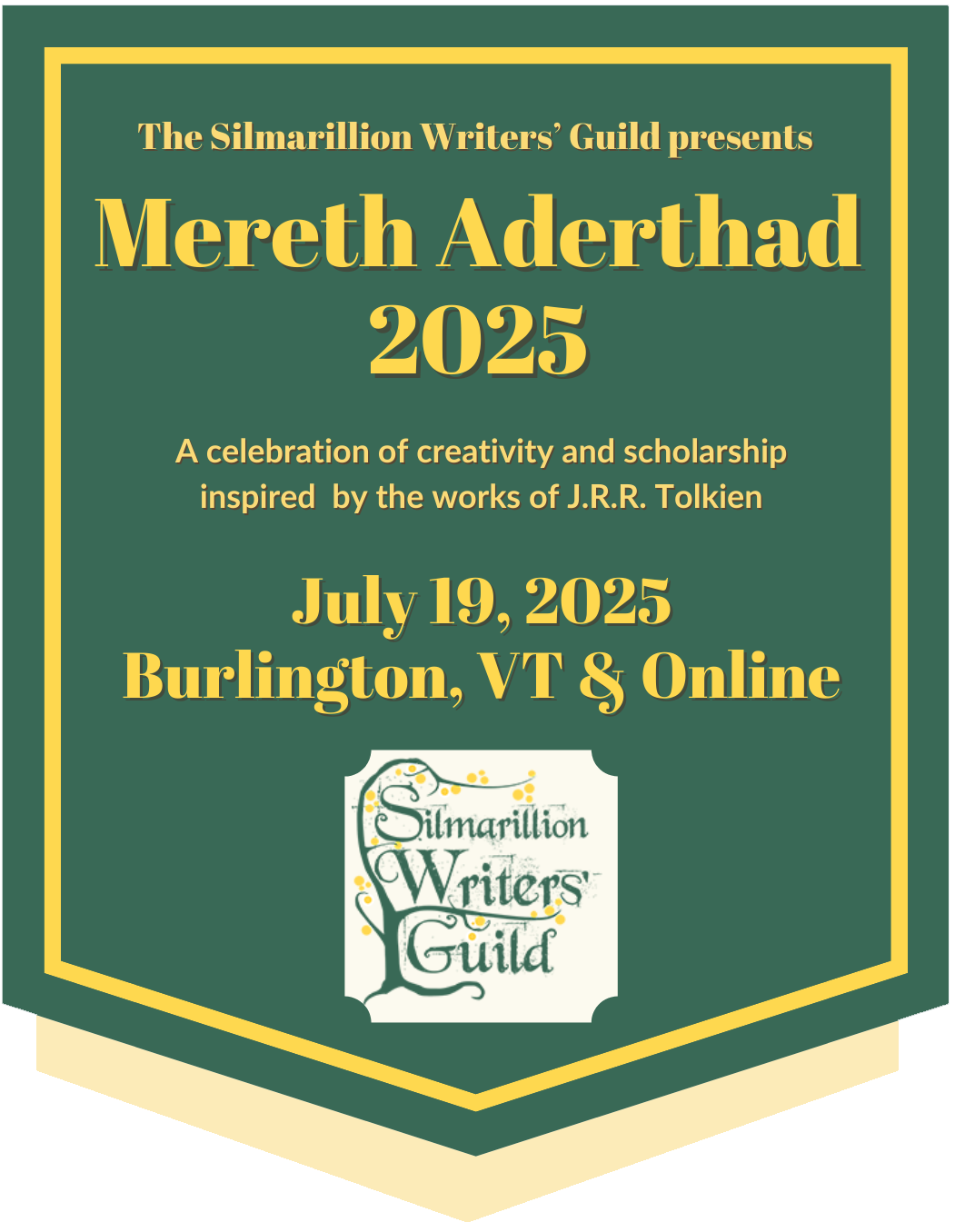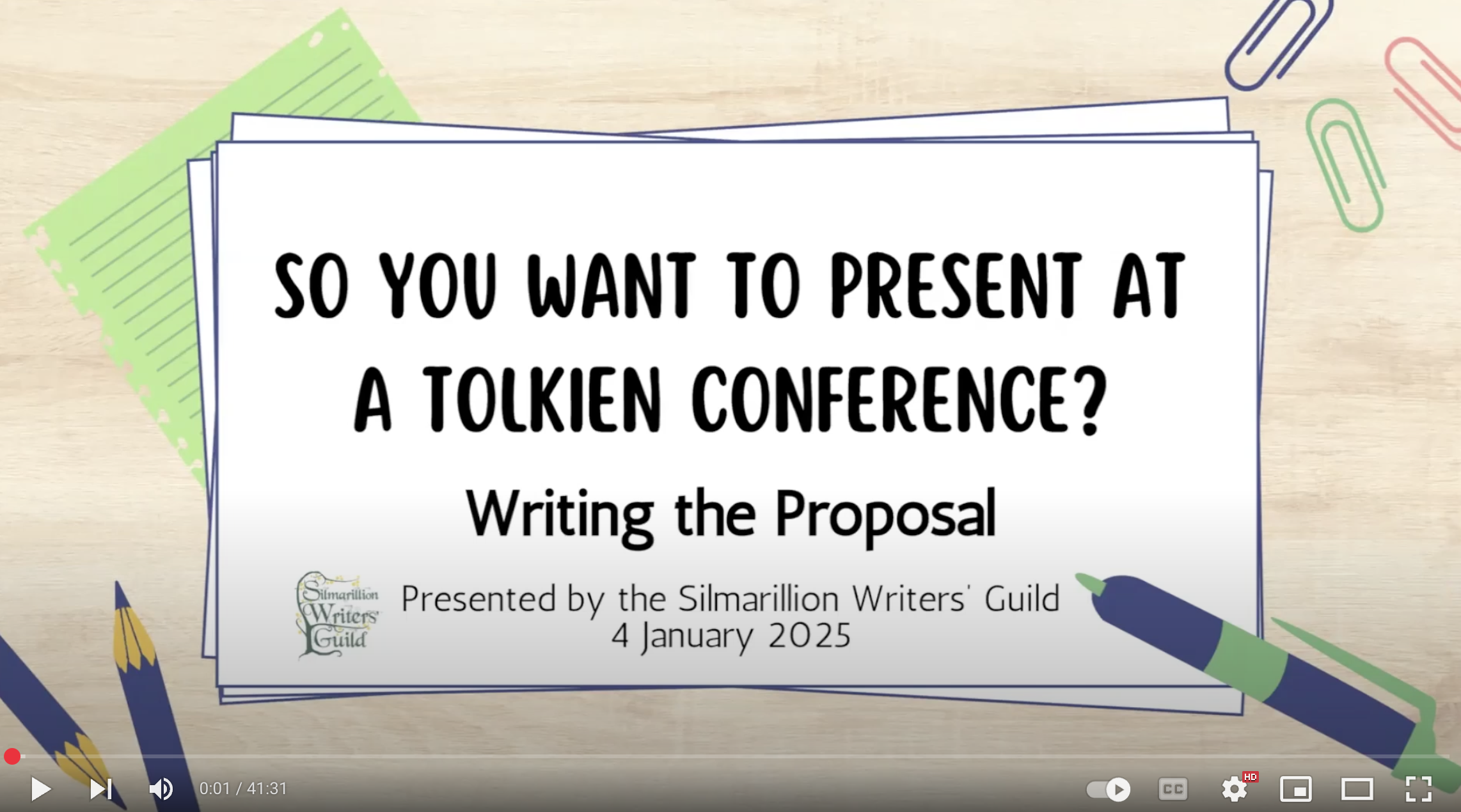So You Want to Present at a Tolkien Conference? Writing the Proposal by SWG Newsletter Staff
Posted on 1 January 2025; updated on 4 January 2025
This article is part of the newsletter column Master Class.
Tolkien studies is a field that welcomes independent scholars, including new scholars and fan scholars. In fact, you'd be hard-pressed to find a Tolkien conference these days where at least a few of the presenters aren't also fanworks creators! The deep research and thought that goes into our fanworks translates well into conference presentations.
However, making the side-step from the fanworks to scholarly side of the fandom can feel intimidating. In this session, we aim to help fans who want to make that step get started by choosing a conference and writing a proposal. This session covers:
- What to expect from a Tolkien conference
- Different ways that conference sessions are structured
- How to structure your proposal in three paragraphs
- Stylistic conventions specific to the humanities (versus other academic fields or types of writing)
Handouts and Presentations
How to Write a Conference Proposal (handout)
So You Want to Present at a Tolkien Conference? Writing the Proposal (slideshow)
Sample Proposal
Grief, Grieving, and Permission to Mourn in the Quenta Silmarillion
Dawn Walls-Thumma (DawnFelagund@gmail.com)
Throughout his letters, Tolkien describes the most important theme of his work not as humility, heroism, or even power but death. The main narrative found in J.R.R. Tolkien's The Silmarillion, the Quenta Silmarillion, contains ninety deaths of named characters, as well as countless deaths of characters who remain unnamed. Considering that grief is a universal human emotion and mourning rituals a universal throughout cultures around the world, one would expect the Quenta Silmarillion to be filled with grief and mourning—but it is not. While some characters are grieved and mourned, not all are. Likewise, not all characters are permitted to mourn loved ones who die.
In this presentation, I will demonstrate that grief and mourning are politicized by Pengolodh, the narrator of the Quenta Silmarillion, to humanize some characters while dehumanizing others. Building on the research that draws on historical analogues between grief and mourning in Tolkien’s works and medieval literary sources, I will show that death scenes in the Quenta Silmarillion use Western medieval tropes around death, grief, and mourning to signify “good” and “bad” deaths. Next, using text analytics, I will show that characters permitted to grieve or to receive grief and mourning are aligned with the narrative biases expected of Pengolodh. The narrator uses grief and mourning in two ways: to show a deceased character is worthy of grief—sometimes detracting from their morally questionable actions—and to humanize characters who engage in grief. Characters, such as Fëanor and Maeglin, who would be disfavored by the narrator, do not receive grief, centering their damaging choices, and often do not show grief, suggesting that they are not capable of this most human of emotions. This research extends the study of death and grieving from The Lord of the Rings and into The Silmarillion and adds additional clarity to the question of narrative perspective and bias, which has received little and conflicting attention in scholarship so far.
In all, analysis of grief and grieving in the Quenta Silmarillion shows that Tolkien engaged in a careful pseudohistorical construction of this text, where in-universe historicity is generated in part by how the narrator responds to various characters' deaths across a complex political and historical landscape. When the narrator sympathizes with a character, that character's value is shown through the reaction of others to his or her death; when a character earns the narrator's disapprobation, she or he is partly dehumanized through a lack of acknowledgement of any grief or mourning. The narrator of the published Silmarillion is very hard to discern and is typically not considered by scholars, but this research shows that not only was he present and shaped Tolkien’s creative choices, but his perspective and biases should always be in mind when analyzing the meaning of the Quenta Silmarillion.


